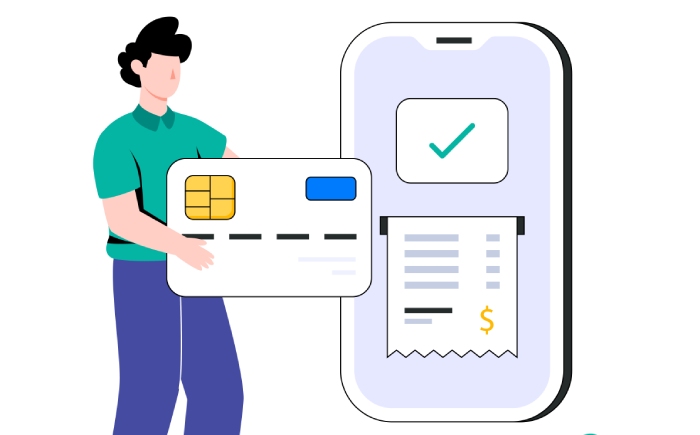Every second counts when your organization experiences a data breach. Having a response plan ready before a data breach happens is critical, so you know the steps to respond quickly to minimize the damage. This article discusses how your enterprise can respond to a data breach by taking proactive measures.
Since data breaches are becoming common, how you respond to them can go a long way in maintaining the trust of your customers and business reputation. Most organizations today take precautions to protect client data by enforcing email security policies and other measures.
However, having a concrete plan for a data breach eventuality is still crucial. It is an area where it helps to be proactive, and if you have a robust program ahead of time, you can secure your systems and data much faster. Before diving into the vital response measures, let us look at the latest data breach statistics.
Key Data Breach Statistics
Data Breach incidents have risen in the past years, with businesses suffering substantial financial losses and reputational damage. The following statistics will put things into perspective:
- According to a report by IBM, average per capita (per record) data breach cost rose by 10.3% from 2020 to 2021.
- The H2 2022 Email Threat Report suggests that email security-related incidents increased by 48% in the first half of 2022.
- The 2021 Thales Data Threat Report suggests that 45% of US enterprises suffered a data breach last year.
- Gartner suggests in a report that 56% of customers express interest in the cybersecurity measures of the organizations with whom they do business.
- According to a 2022 Fugue report, 36% of the 300 surveyed cloud security and engineering professionals said their organization suffered a critical cloud security breach in the past year.
- A Comparitech study examined the share prices of 34 organizations listed on the New York Stock Exchange (who had experienced data breaches). It noted that enterprises which experienced a breach underperformed the competition by over 15% three years later.
A 3-Point Incident Response Plan for Businesses
As mentioned earlier, preparation is vital. Suppose you prepare for the worst and develop a data breach response plan. In that case, your security teams can respond quickly and mitigate the risk to your critical business functions in the event of a cyber incident. Following are the three basic steps your team members can take immediately in the event of a data breach:
- Secure your operations
- Fix vulnerabilities
- Notify appropriate parties
Secure Your Operations
Mobilize your response team immediately to prevent more significant data loss. Take the affected equipment offline quickly and closely monitor all the entry and exit points (both physical & network). It can include laptops, computers, servers or any other system affected by the attack. Additionally, update all credentials right away.
- Contain the breach: After you assess the situation and determine how the hackers accessed your system and networks, you must contain the breach. It will help your enterprise to minimize the impact of the breach. Then, look for commonalities in the breached data. It will point to a single source or a single method of data breach.
- Secure the physical breach-related areas: In the next step, you must secure the physical areas concerned with the breach. Only the response team should have access to them. It includes any devices and systems associated with the breach until the issue gets resolved. Additionally, you can consult with law enforcement and forensic experts about when to resume regular operations.
Fix Vulnerabilities
Find out from where the hackers breached the network, and plug those vulnerabilities into your security. For example, if the hackers lured the employees into sharing credentials through a phishing email campaign, you need stringent email authentication policies.
- Document everything: You must document everything regarding the breach – from the discovery of the breach to how you deal with it. Additionally, maintain records of communications with employees, customers or law enforcement. It will help you during report filing, and the record will help you communicate better with your customers and staff.
- Prevent further data leakage: Finally, take the essential steps to prevent further data leakage. It includes removing third-party apps containing security vulnerabilities. Additionally, thoroughly review the data security systems to find potential security gaps and fix them.
Notify Appropriate Parties
Depending on your business type and the specific situation, you must report the breach to government agencies, law enforcement, affected vendors and individuals, and other entities.
- Alert your staff: Avoid panicking if you become a data breach victim. Quickly alert your team and be transparent with them when explaining the situation. You must provide instructions on what to do after the breach, including handling the customers and responding to other employees.
- Assess the risks and priorities: Finally, you must identify the source of the data breach. Find out why the threat actors targeted your business and the steps you can take to avoid such incidents in the future. Be specific when assessing. Avoid generalizations like “all the customer data is at risk” and evaluate the compromised data accurately.
If the risks are too severe for the customers and business, you might need to shut down business operations until you take appropriate measures.
Importance of Determining Your Legal Requirements
You must stay brushed up with your state, local and regulatory breach notification laws, including the data defense laws. Whatever damage you uncover in the investigation will have applicable federal, state or industry regulations.
Many US states are now enacting data breach defense laws that offer you more protections if you prove the enactment of specific security controls before the breach. Consulting incident response vendors can be helpful because they assist in identifying and collecting evidence for reporting requirements.
Important Tip: Staying Calm in the Event of a Breach
It is easier said than done while experiencing a high-stress event. But, it is crucial if your entire network shuts down, and you cannot process debit card or credit card transactions, or you receive a notice from cybercriminals with a ransom request to release your encrypted data. In such situations, you might become tempted to rush into recovery.
However, suppose you panic and randomly turn on/off the compromised machines, asking your security teams to patch the hole quickly or shut down the port on the firewall to get your business back online and running. In that case, you will make the situation worse. Therefore, it is crucial to have a well-defined incident response plan that addresses application incidents effectively, including monitoring and detecting vulnerabilities, promptly patching and updating software, and implementing robust security measures.
By being prepared and having the right response in place, you can effectively handle incidents and protect your business from disruptions and damages.
Final Words
As with any crisis, an instant and decisive response is critical if your organization suffers a data breach. Whether you run a small or a large business, cybercriminals constantly try to compromise organizational networks and systems to steal data. And as we mentioned before, data breaches have devastating consequences for any business. Thus, how quickly your organization responds to a threat decides the severity of a data breach. With the steps we mentioned, you can promptly respond to a data breach and prepare yourself for the worst-case scenario.


